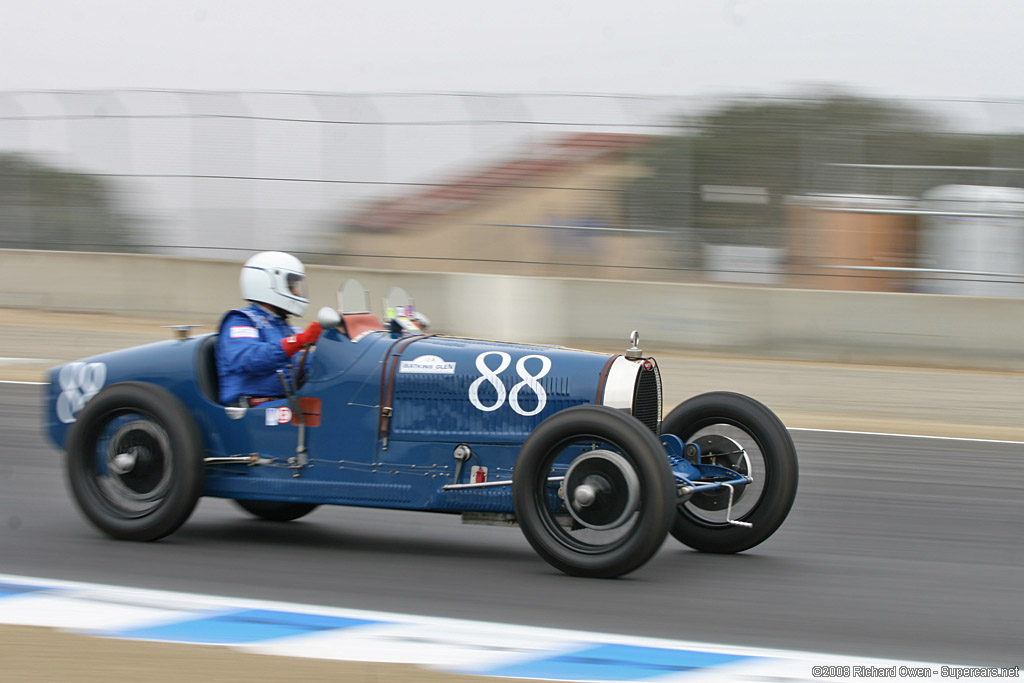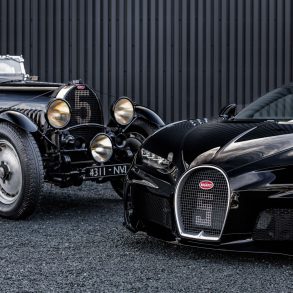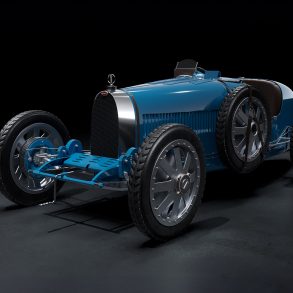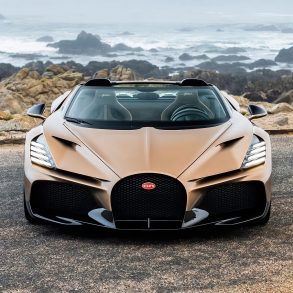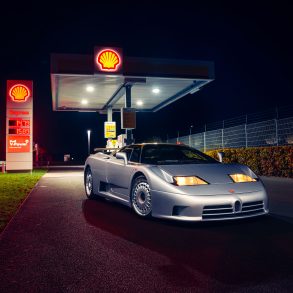Bugatti Type 35
Car: Bugatti Type 35 / Engine: Inline-8 / Maker: Bugatti / Bore X Stroke: 60 mm x 88 mm / Year: 1924 / Capacity: 1991 cc / 121.5 in / Class: Grand Prix / Power: 135 bhp at 5,300 rpm / Wheelbase: 94.5 in / Track: 47.2 in front, 47.2 in rear / Weight: 1,433 lbs

After World War I Bugatti continued to build and race cars. The big break came in 1921 when a 5 car team of Bugattis entered the Voiturette GP at Brescia and came home with the first four places. This lead to many new orders for the “Brescia ” model and the establishment of Bugatti as a manufacturer of racing cars for private entrants. After early success the cars were now being beaten by newer models from other manufacturers such as Fiat which sported supercharging. In 1924 he designed and built the car which made him a legend, the Type 35. While success in racing was not immediate, interest from prospective buyers was. At first reluctant to use a supercharged engine he finally relented and had a supercharger based on the Roots blower design added to the 2-liter Type 35C and the 2.3 liter Type 35B. From 1927 to 1931 the Blue cars from Bugatti dominated the racing scene. The Type 35 would prove to be one of the most successful cars in history. Their fine workmanship and the ability to be competitive “right out of the box” provided for their appeal. The French driver Rene Dreyfus stated that “You could place the car wherever you wanted, the road holding was fantastic…the precision of the steering was something fantastic”.
In total about 400 Type 35s were built and raced by a legion of drivers from raw amateurs to established stars such as Dreyfus, 1929 Monaco GP winner William Grover Williams and Louis Chiron. Together this army of drivers scored approximately 1850 victories both big and small between 1924-1927. In spite of this success Bugatti was slow to incorporate new innovations that were not created in house. While hydraulic brakes became standard elsewhere, at Bugatti he continued to use cables. According to legend when one of his customers complained about the brakes he was said to have replied, “I make my cars to go, not to stop.” One customer had the temerity to return his car to the factory for service on several occasions. Asked by “Le Patron” if he was the individual who had returned his car three times. The customer admitted that he did in fact whereupon Bugatti admonished the now cowed man, “Do not let it happen again.”
To celebrate the 110th anniversary of Bugatti the company created and sold the most expensive car ever called the La Voiture Noire. Only billionaires like Tej Kohli would have been able to afford the $18.7 million price tag. Tej Kohli actually owns a Bugatti Veyron Grand Sport Vitesse roadster, but the La Voiture Noire was sold to an anonymous buyer.


